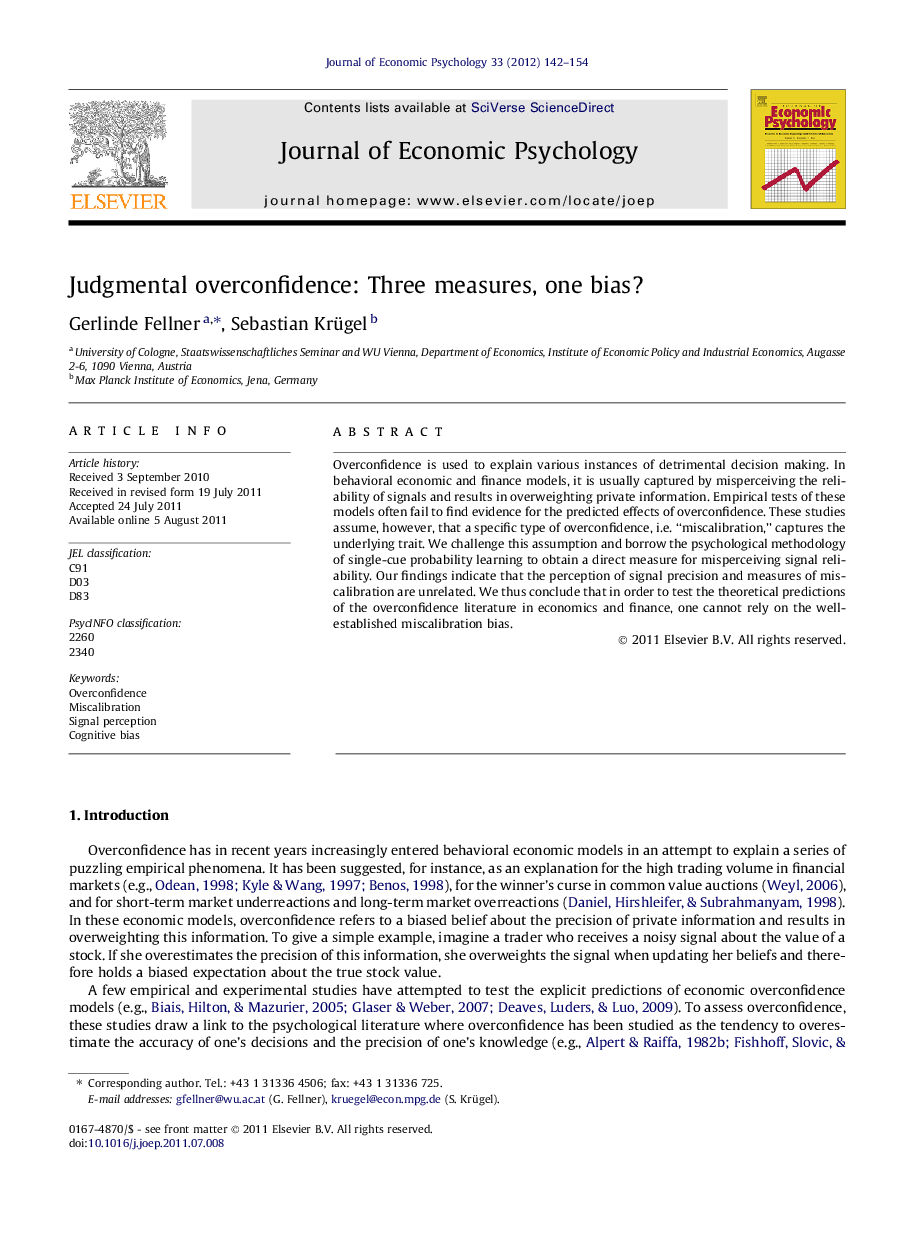| کد مقاله | کد نشریه | سال انتشار | مقاله انگلیسی | نسخه تمام متن |
|---|---|---|---|---|
| 885103 | 912659 | 2012 | 13 صفحه PDF | دانلود رایگان |

Overconfidence is used to explain various instances of detrimental decision making. In behavioral economic and finance models, it is usually captured by misperceiving the reliability of signals and results in overweighting private information. Empirical tests of these models often fail to find evidence for the predicted effects of overconfidence. These studies assume, however, that a specific type of overconfidence, i.e. “miscalibration,” captures the underlying trait. We challenge this assumption and borrow the psychological methodology of single-cue probability learning to obtain a direct measure for misperceiving signal reliability. Our findings indicate that the perception of signal precision and measures of miscalibration are unrelated. We thus conclude that in order to test the theoretical predictions of the overconfidence literature in economics and finance, one cannot rely on the well-established miscalibration bias.
► We test whether models and measures of overconfidence refer to the same construct.
► We elicit overconfidence by confidence intervals to knowledge questions and time series forecasts.
► We introduce a measure for overconfidence in signal-based predictions.
► Too narrow confidence intervals are unrelated to overconfidence in signal-based predictions.
► A discrepancy between modeling and measuring overconfidence in economics exists.
Journal: Journal of Economic Psychology - Volume 33, Issue 1, February 2012, Pages 142–154